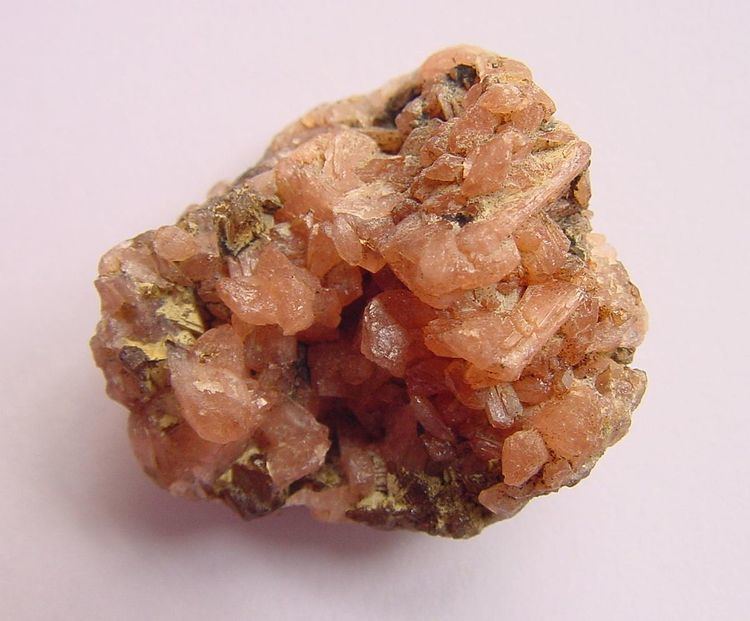Category Phosphate minerals Dana classification 39.2.1.1 | Formula(repeating unit) Mn5(PO3OH)2(PO4)2·4H2O Crystal system Monoclinic | |
 | ||
Strunz classification 8.CB.10 (10 ed)7/C.04-10 (8 ed) Crystal class Prismatic (2/m)(same H-M symbol) | ||
Hureaulite is a manganese phosphate with the formula Mn2+5(PO3OH)2(PO4)2·4H2O. It was discovered in 1825 and named in 1826 for the type locality, Les Hureaux, Saint-Sylvestre, Haute-Vienne, Limousin, France. It is sometimes written as huréaulite, but the IMA does not recommend this for English language text.
Contents
A complete series exists from lithiophilite, LiMn2+PO4 to triphylite, LiFe2+PO4, including hureaulite, strengite, FePO4·2H2O, stewartite, Mn2+Fe3+2(OH,PO4)2·8H2O, and sicklerite, (LiMn2+,Fe3+)PO4.
Environment
Hureaulite is a secondary mineral occurring in granite pegmatites. At the type locality it occurs in a zone of altered triphylite, LiMn2+PO4, in pegmatite. Typically occurs very late in the sequence of formation of secondary phosphate minerals. Associated at the type locality with vivianite, Fe2+3(PO4)2·8H2O; rockbridgeite, Fe2+Fe3+4(PO4)3(OH)5; heterosite, (Fe3+,Mn3+)PO4 and cacoxenite, Fe3+24AlO6(PO4)17(OH)12·17H2O. It can be synthesised; most natural hureaulites are Mn-rich compounds but extensive (Mn,Fe) solution is known for synthetic material.
Localities
The type locality is Les Hureaux, Saint-Sylvestre, Haute-Vienne, Limousin, France. Hureaulite is also found in a granite pegmatite known for its phosphates in the Aimorés pegmatite district, at the Cigana claim in Galiléia, Doce valley, Minas Gerais, Brazil, formerly known as the Jocão Mine.
